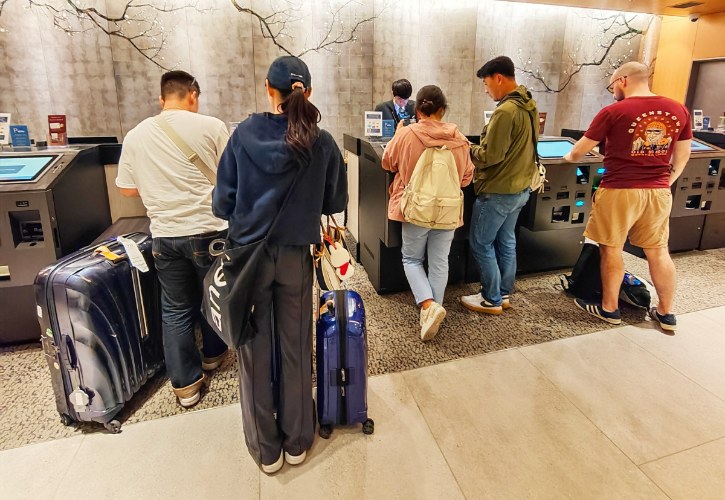
Ever wonder if you’re making simple mistakes when booking hotels in Osaka and Kyoto?
Picking the wrong location or misunderstanding bed sizes can lead to unnecessary stress and wasted time.
I’ve personally experienced these pitfalls, so I’m sharing the top 10 hotel booking mistakes you should avoid.
Here’s how to make your stay relaxing, convenient, and hassle-free! 😊
1. Choosing Hotels Too Far from Major Train Stations
a. Problems with Choosing Hotels Far from Major Train Stations
- Time Loss: Staying far means extra daily travel, reducing sightseeing time.
- Luggage Struggles: Carrying heavy bags to distant hotels is exhausting, especially with limited escalators or elevators.
- Less Flexibility: Hard to return midday for breaks or dropping off shopping bags.
b. Best Areas to Stay in Osaka
i. Namba Station
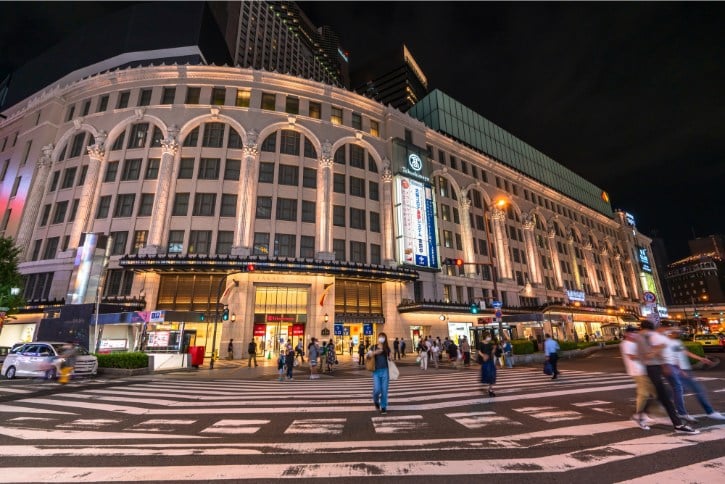
- Great for dining, street food, and nightlife. Famous Dotonbori district and Shinsaibashi shopping street are nearby.
- Excellent transit options with multiple subway lines and direct train connections from Kansai Airport (via Nankai Line).
- The Osaka City Air Terminal (OCAT) is here, offering convenient airport shuttles and buses to other cities.
- Direct trains to Nara (Kintetsu Line) and Kyoto (with one transfer).
- Recommended Hotel: Hiyori Hotel Osaka Namba Station (I stayed here and found it very convenient, close to the station, restaurants, and attractions.)
ii. Osaka Station (Umeda)
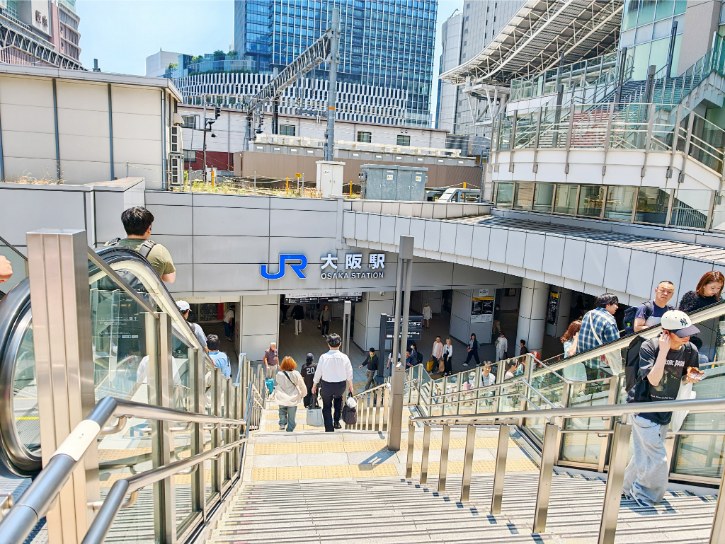
- Central transport hub for travel within Osaka and easy day trips to Kyoto, Kobe, and Nara via JR trains.
- Plenty of shopping malls and department stores nearby, including Grand Front Osaka, LUCUA Osaka, HEP FIVE, Hankyu Department Store Umeda, Hanshin Department Store, and Yodobashi Camera Umeda.
- Home to the newly opened Grand Green Osaka, a spacious urban park area with shopping, dining, and relaxing spaces directly connected to Osaka Station, ideal for unwinding after sightseeing.
- Slightly quieter nightlife compared to Namba, but still vibrant and convenient for visitors.
- Recommended Hotel: Hotel Hankyu RESPIRE OSAKA (I stayed here and found it extremely convenient, directly connected to Osaka Station, shopping malls, and dining options.)
c. Best Areas to Stay in Kyoto
i. Kyoto Station
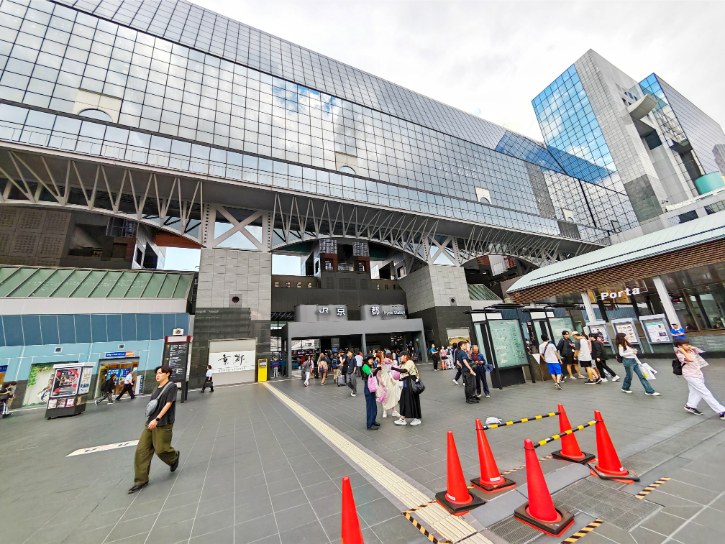
- Main transportation center with direct trains to major cities (Osaka, Nara, Hiroshima, Tokyo via Shinkansen).
- Central bus hub for easy access to Kyoto’s main attractions, temples, and shrines.
- Very convenient for arrival and departure, especially with heavy luggage, due to direct access to Shinkansen (bullet trains), regular trains, airport express trains (Haruka Express), buses, and taxis.
- Modern area with shopping malls, restaurants, and convenience stores, although not as traditional in atmosphere.
- Recommended Hotel: Daiwa Roynet Hotel Kyoto Ekimae PREMIER (I stayed here and found it very convenient, just a short walk from Kyoto Station, buses, shops, and restaurants.)
ii. Shijo/Karasuma Station (Downtown Kyoto)
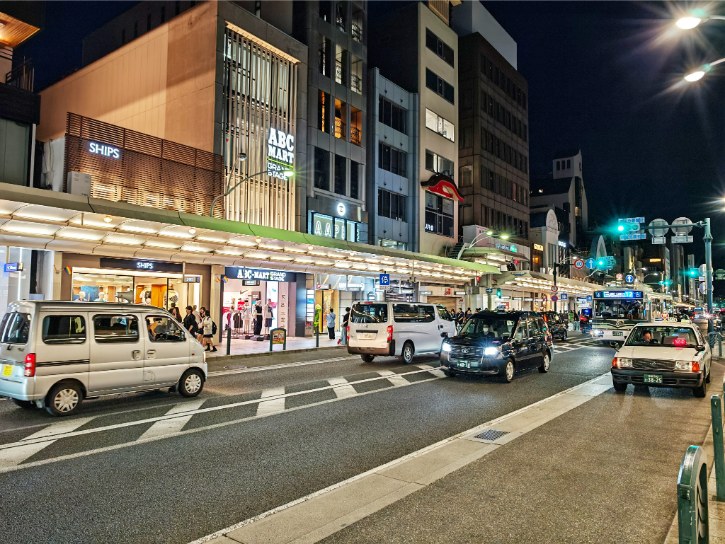
- Ideal central location with vibrant shopping, dining, and nightlife options.
- Walking distance to Nishiki Market, Pontocho, and Gion area, blending convenience and traditional Kyoto experience.
- Good public transport connections via subway and buses, allowing quick trips to tourist attractions.
- Key sights like Kiyomizu-dera and Yasaka Shrine are 15–20 mins away.
- Offers a lively evening atmosphere with restaurants and shops open late, making your stay enjoyable even after daytime sightseeing.
- Recommended Hotel: Hotel Forza Kyoto Shijo Kawaramachi (I stayed here and found it very convenient, located close to shopping streets, Nishiki Market, restaurants, and easy transport connections.)
2. Overlooking Bus Accessibility in Kyoto
a. Importance of Kyoto’s Bus Network
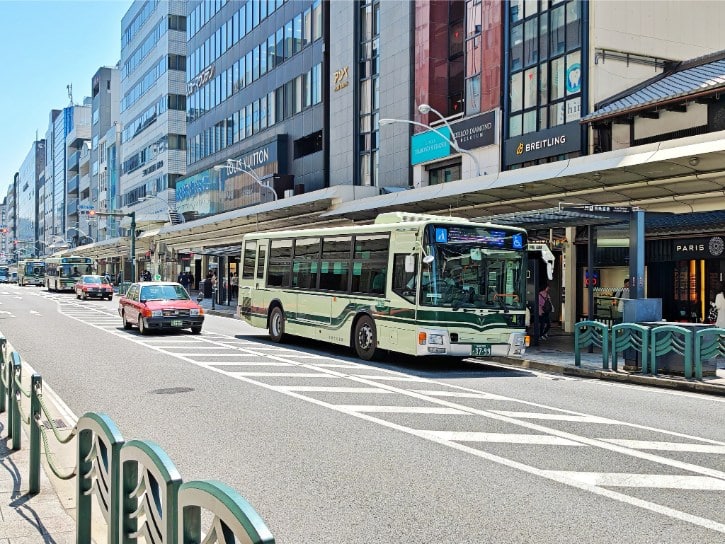
- Best Way Around: Kyoto’s main attractions (like Kinkaku-ji, Ginkaku-ji, Kiyomizu-dera, Ninenzaka, and Sannenzaka) are easiest to reach by bus since the subway system doesn’t cover these key areas.
- Direct Access: Buses often stop very close to major sights, saving you from long walks.
b. Impact of Poor Bus Accessibility
- Long Walks: Hotels far from bus stops mean you’ll spend extra time and energy walking each day just to reach transport.
- Wasted Time: You’ll lose valuable sightseeing time trekking to and from distant bus stops.
- Extra Fatigue: Kyoto involves a lot of walking already, so extra walks to buses will quickly tire you out.
c. Best Locations for Bus Accessibility
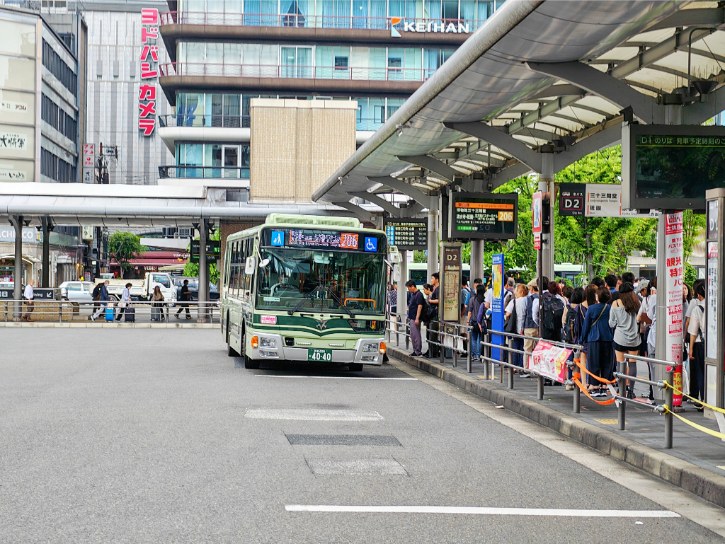
- Kyoto Station Area: Ideal for first-time visitors, this area has Kyoto’s main bus terminal with routes directly to major sights like Kiyomizu-dera, Gion, Ginkaku-ji, Kinkaku-ji, and Nijo Castle. Staying here means minimal walking and quick, direct trips.
- Shijo/Karasuma (Downtown): This busy central area has many convenient bus routes to attractions across Kyoto. You can easily reach temples and shrines without needing to transfer buses or return to Kyoto Station.
3. Assuming Double Beds Are Standard
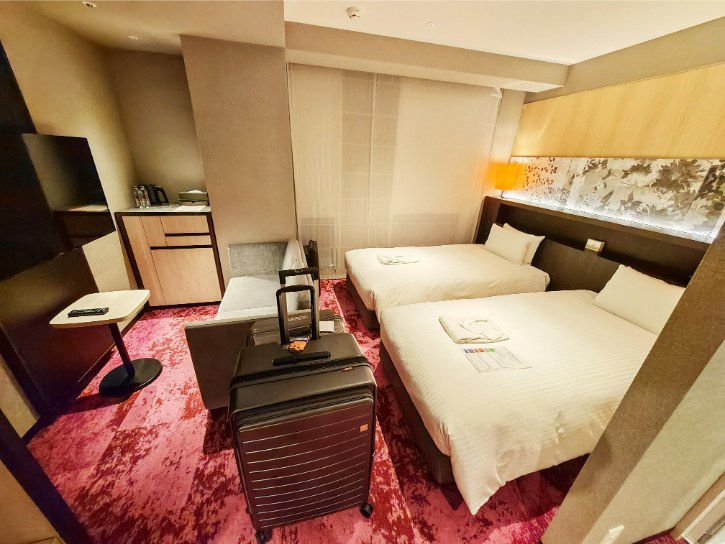
a. Bed Size Misconceptions
- Smaller Beds in Japan: Hotel beds in Osaka and Kyoto are usually smaller than Western standards.
- Semi-Double Beds: Usually around 120 cm wide; great for one person but very tight for two.
- Double Bed Size: A double bed in Japan is about 140 cm wide, narrower than typical Western double beds.
b. Terminology Differences
- Single: One bed about 100 cm wide; comfortable for one guest.
- Semi-Double: A smaller double bed, roughly 120 cm; good for one, cozy but tight for two guests.
- Double: About 140 cm wide; fits two adults but feels snug compared to Western doubles.
- Twin: Two single beds, each around 100 cm wide; perfect for two travelers who prefer separate beds.
c. Book Twin Instead of Double
- More Comfortable Sleep: Twin rooms with two separate beds offer better sleep quality for two people.
- Larger Room Size: Twin rooms are usually more spacious, giving you extra room for luggage and easier movement.
- Better Value: Often just slightly more expensive than double rooms, twin rooms provide much greater comfort, especially in smaller Japanese hotel spaces.
4. Overlooking Hotel Laundry Facilities
a. Importance of Coin-Laundry Facilities in Hotels
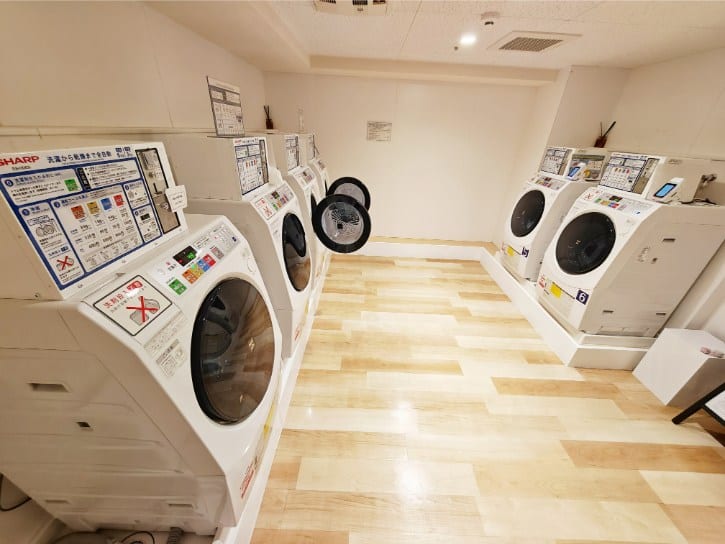
- Practical and Common: Coin-operated laundry facilities are widely available in many hotels, especially mid-range and business hotels in Osaka and Kyoto.
- Convenient for Multi-Day Stays: If you’re staying for several days or more, hotel coin-laundry makes it easy to wash clothes anytime, helping you pack lighter.
- Cost Savings Compared to Hotel Laundry Service: Using your hotel’s coin-laundry is significantly cheaper than professional laundry services offered by hotels, which often charge per clothing item.
b. Recommendations for Checking Coin-Laundry Availability
- Not Always Available: Smaller boutique hotels, luxury accommodations, and traditional ryokans often don’t have coin-laundry.
- Check Reviews & Websites: Always confirm on hotel websites, booking platforms, or guest reviews if laundry facilities are available.
- Contact Hotel Directly: If unsure, email or call the hotel directly to avoid surprises upon arrival.
c. Inconvenience of External Laundromats
- Time & Effort: Without hotel laundry, you’ll have to find local coin laundromats, which can waste travel time.
- Language Barriers: External laundromats might lack English instructions, causing confusion.
- Less Comfortable: Carrying your laundry to an external laundromat can be inconvenient, especially in bad weather or late at night.
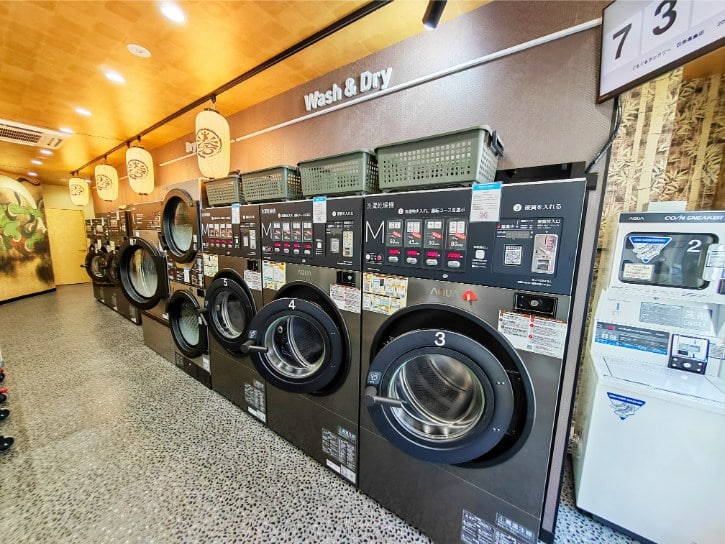
- Recommended External Laundromat in Kyoto: I found a reliable external laundromat called GuruLaundry in the Shijo area. They have plenty of machines, and you can conveniently check machine availability and status directly from your phone.
d. Cost and Budget Considerations
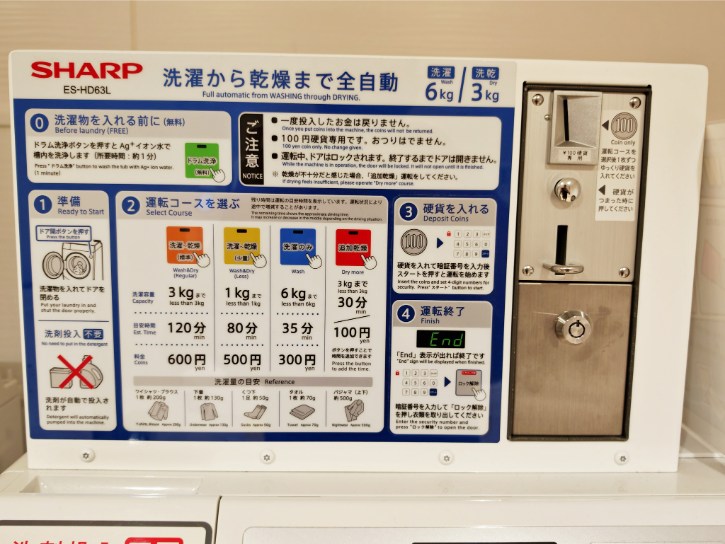
- Affordable Option: Hotel coin-laundry is inexpensive, typically around ¥300 per wash and ¥100 per dryer cycle.
- Avoid High Hotel Fees: Professional laundry services provided by hotels often charge high prices (over ¥1,000 per item). Using coin-operated laundry significantly cuts down your costs.
- Easy for First-Time Users: Machines usually have clear English instructions, making them simple to use even if it’s your first time in Japan.
- Detergent Often Included: Many hotel coin-laundry machines automatically dispense detergent, so you typically won’t need to purchase your own.
- Recommended Hotels with Coin Laundry: These five hotels I stayed at in Osaka and Kyoto all offer convenient coin-laundry facilities:
5. Not Factoring in Airport Transfers
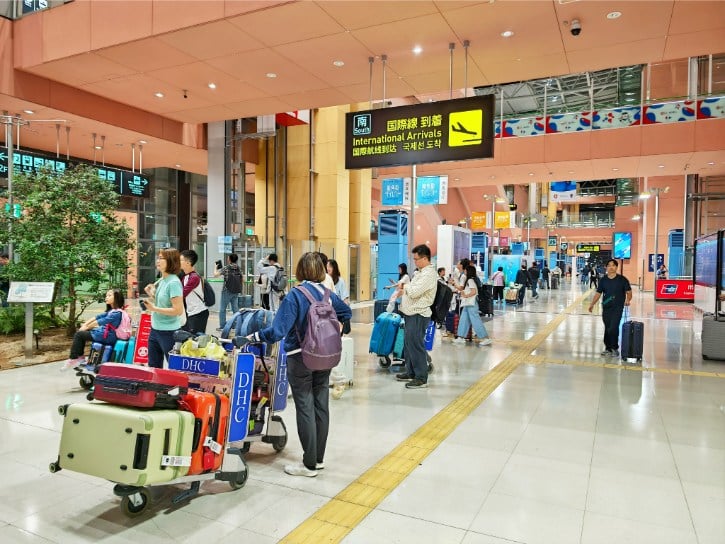
a. Unexpected Travel Costs
- Expensive Taxis: If you don’t plan your airport transfer from Kansai Airport (KIX), taxis can cost around ¥15,000 to ¥22,000 to Osaka and over ¥40,000 to Kyoto.
- Save with Trains or Buses: Airport trains or buses cost much less, about ¥1,500 to ¥2,850. Planning ahead helps you avoid unexpected expenses.
- Budget Early: Decide and budget your transfer from the airport to your hotel before arriving to keep costs under control.
b. Convenience of Airport Express Trains
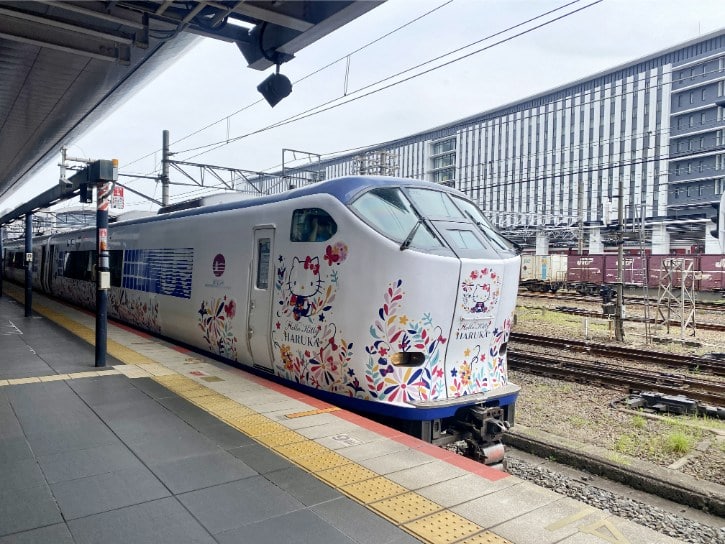
- Haruka Express (JR): Runs directly from KIX to Osaka (Tennoji, Shin-Osaka, Osaka Station) and Kyoto Station. It takes about 75 minutes to Kyoto, has reserved seats, and space for luggage.
- Nankai Rapi:t (to Namba): Fast, direct train from KIX to central Osaka (Namba Station) in about 35 minutes, with comfortable seats and luggage areas.
- Stay Near Major Stations: Choosing a hotel near Kyoto Station, Osaka Station (Umeda), or Namba lets you take these direct airport trains easily, without extra transfers.
c. Luggage Hassles
- Limited Space on Local Trains: Regular trains and subways don’t usually have much room for large luggage, making travel uncomfortable.
- Difficult Station Transfers: Changing trains often means using stairs, escalators, and long walks. Some stations lack elevators or escalators.
- Bus Challenges: City buses, especially in Kyoto, are crowded and don’t have space for large suitcases. It’s difficult to board with big luggage.
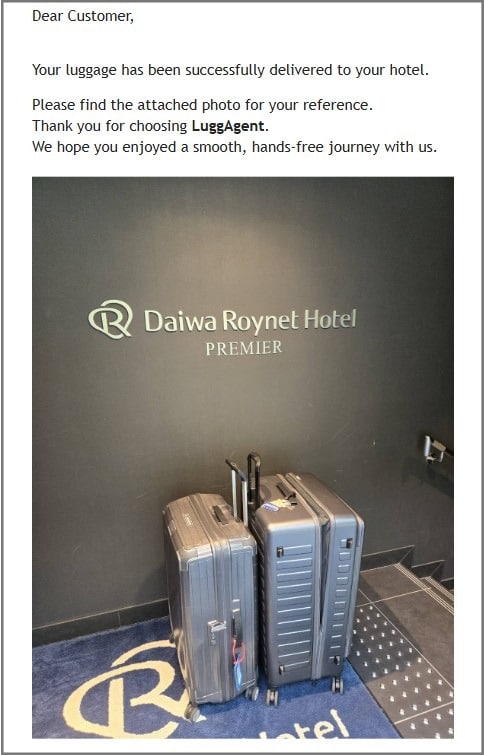
- Luggage Delivery Option: Consider sending your bags directly to your hotel using Japan’s luggage delivery service. It’s convenient, lets you travel lighter, plus they’ll update you via WhatsApp and email. I personally used this service and found it really efficient.
d. Hotel Location Misjudgements
- Not All Stations Are Equal: Just because a hotel is near a station doesn’t mean it’s convenient for airport access. Check carefully.
- Check Station Connections: Make sure your hotel’s station has a direct link to airport express lines like Haruka or Nankai. Avoid unnecessary transfers.
- Check Walking Routes: Even a short walk from a station to your hotel can involve stairs or uneven roads. Use maps or Street View to check first.
- Plan Last Leg Clearly: If your hotel isn’t directly accessible by train, plan to use a short taxi ride or hotel shuttle from the closest main station. This is cheaper than taking a taxi all the way from KIX.
- Stay Near Major Hubs at First: For your first visit, staying near main stations like Kyoto Station, Osaka Station (Umeda), or Namba makes your arrival easier and smoother.
6. Booking Non-Refundable Rates Too Early
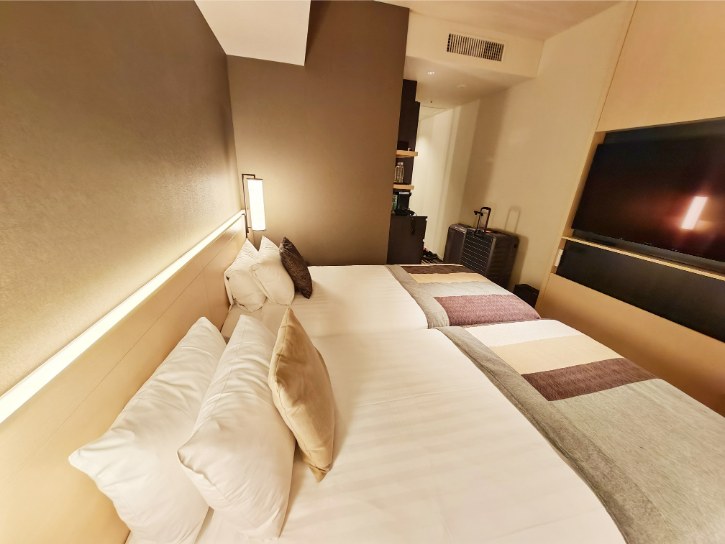
a. Lack of Flexibility
- Changing Plans: You can’t easily adjust your dates or itinerary without losing money.
- Better Options Later: You’re stuck with your initial choice, even if better hotels become available later.
b. Risk of Losing Money
- No Refunds: If your plans change, you lose your full payment.
- Emergencies: Illness, flight cancellations, or unexpected issues won’t usually get you a refund.
c. Limited Room for Adjustments
- Dates Are Locked: It’s tough to extend or shorten your stay without paying extra or losing money.
- Difficult Upgrades: Switching rooms or hotels becomes complicated or costly, as your booking is already set
Tip: It’s safer to book flexible (free cancellation) rates or wait until your plans are firm, keeping your options open and avoiding potential headaches.
7. Booking Late During Peak Seasons
a. Limited Availability and Higher Prices
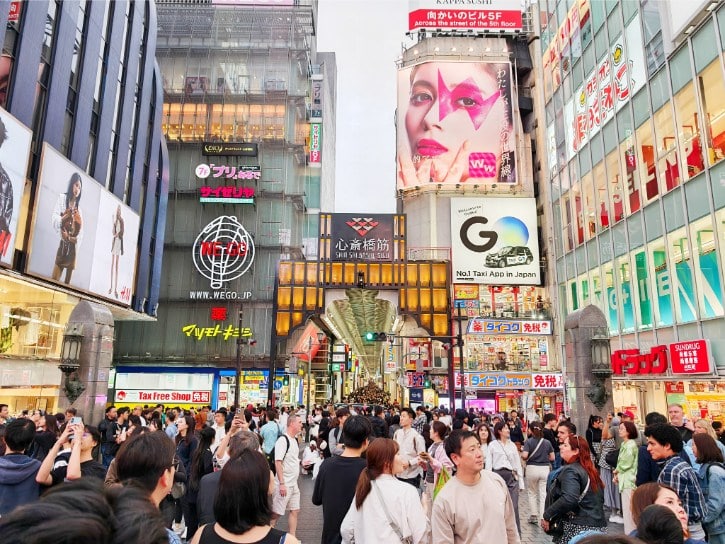
- Popular Stations (Osaka Station, Namba, Kyoto Station, Shijo/Karasuma): Hotels near these key locations fill quickly. If you book late, you’ll have fewer choices and may end up far away.
- Peak Season Pricing (Cherry Blossoms, Autumn Leaves, Golden Week, New Year): During these busy periods, hotel prices rise dramatically. Booking late means paying significantly higher rates.
- Inconvenient Locations: Late booking often forces you to stay outside central areas, causing extra travel time and less sightseeing convenience.
b. Difficulty for Groups or Families
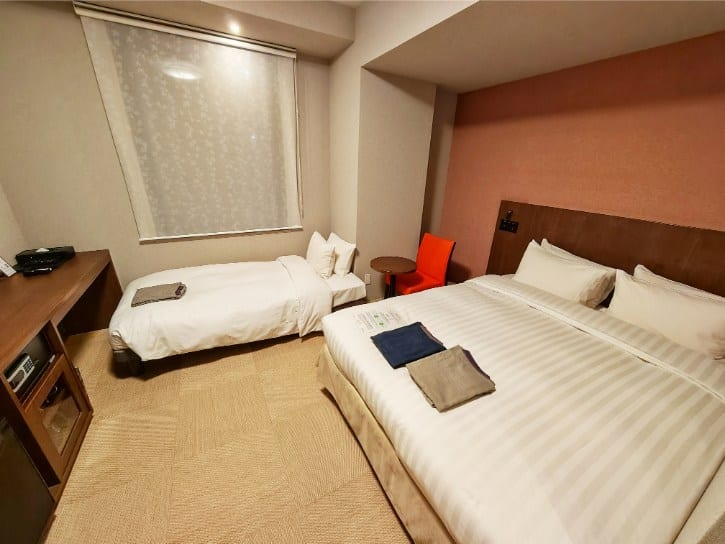
- Limited Family Rooms: Hotels have very few large rooms or connecting rooms. If you wait, you may not find a suitable room for your group or family.
- Splitting Your Group: Booking late could mean separating your group into multiple rooms, different floors, or even different hotels.
c. Fewer Options for Special Requests
- Room Preferences: Late booking makes it difficult to request specific room views, non-smoking rooms, or preferred floors, since these rooms are usually taken first.
- Connecting Rooms: Requests for connecting or adjacent rooms are rarely fulfilled at the last minute due to limited availability.
d. Limited Access to Amenities
- Coin-Laundry Facilities: Hotels with convenient coin-operated laundry fill early. Booking late means fewer hotels offering this helpful feature.
- Location Convenience: Hotels close to convenience stores, bus stops, and train stations are popular and book quickly.
8. Confusing Major Stations (Osaka vs. Shin-Osaka)
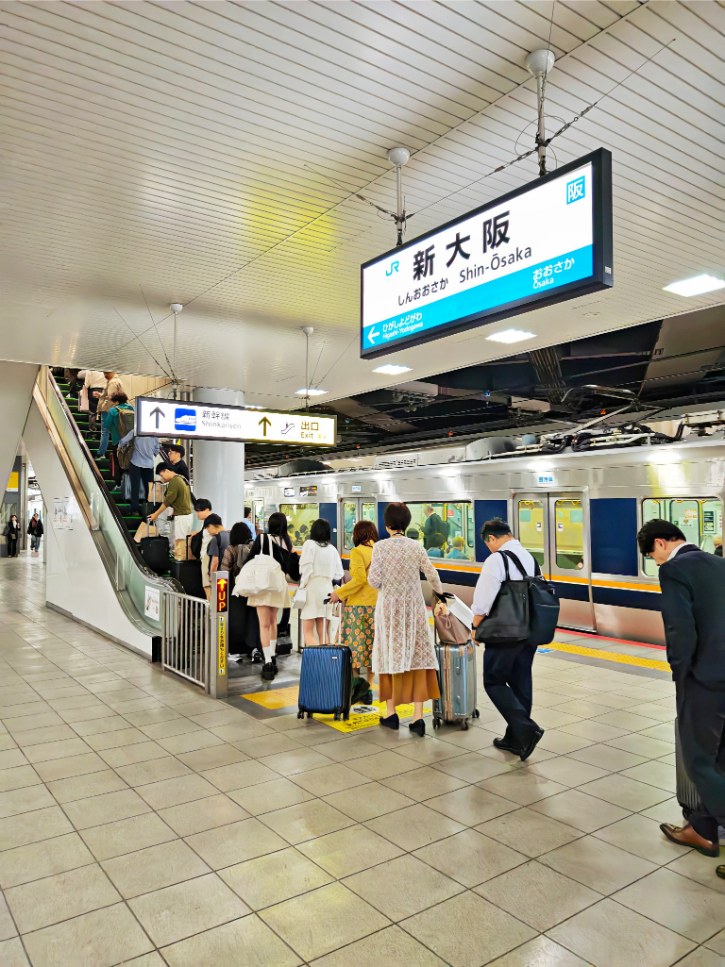
a. Misunderstanding Station Differences
- Osaka Station (Umeda): Located right in central Osaka, perfect for sightseeing, shopping, and exploring the city. Ideal if you want easy access to main attractions and lively city vibes.
- Shin-Osaka Station: Mainly used for bullet trains (Shinkansen). It’s north of the city center and further from key tourist areas. Good only if you’re frequently traveling by bullet train.
b. Impact on Travel Plans
- Extra Commuting: Choosing a hotel near Shin-Osaka means extra travel time to popular areas like Namba, Dotonbori, or Umeda every day.
- Less Convenient: Staying near Shin-Osaka makes sightseeing trips more complicated, involving transfers between trains and subways. You lose valuable vacation time.
c. Limited Dining and Entertainment Options (Shin-Osaka)
- Fewer Restaurants and Shops: Shin-Osaka is mostly a business and transit area with limited dining choices and fewer shopping opportunities.
- Quiet Nights: Little nightlife around Shin-Osaka. If you prefer lively evenings and plenty of food options, stay near Osaka Station (Umeda) or Namba instead.
9. Spending Too Few Nights in Osaka or Kyoto
a. Underestimating Travel Time
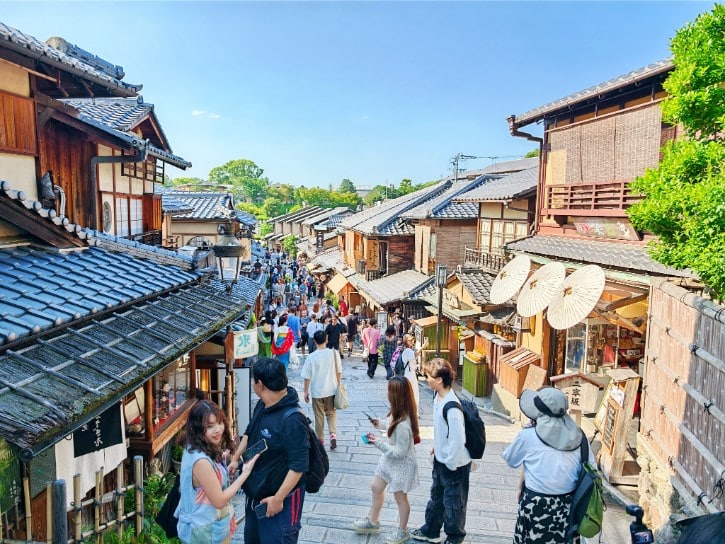
- Spread-Out Attractions: Major sights in Osaka and Kyoto are scattered, meaning travel between them often takes longer than you expect.
- Rush Hour Delays: Traffic, crowded buses, and busy trains can slow you down, especially during peak travel hours.
b. Missing Out on Key Attractions
- Limited Time Forces Trade-Offs: Short trips mean prioritizing a few attractions while skipping others, resulting in missed experiences.
i. Must-see in Osaka
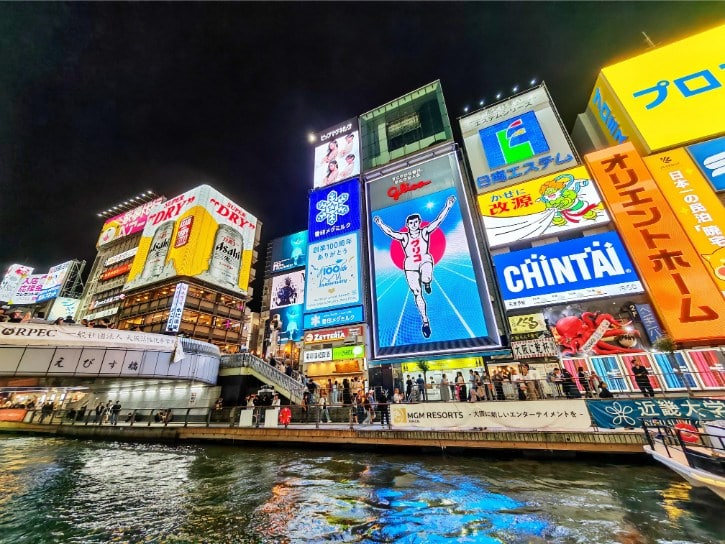
- Dotonbori: Vibrant area famous for street food, nightlife, and neon lights; best experienced at a leisurely pace, especially at night.
- Osaka Castle: Iconic historic landmark with extensive grounds and museum; deserves several hours for exploration.
- Universal Studios Japan: Popular theme park needing a full day to enjoy attractions properly.
ii. Must-see in Kyoto
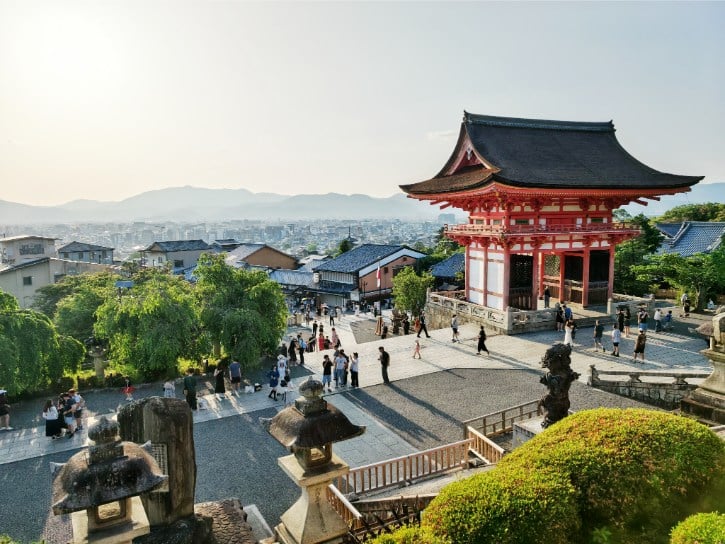
- Kiyomizu-dera Temple: Historic temple with scenic views; takes at least 2 hours to fully enjoy the temple grounds and surrounding streets.
- Fushimi Inari Shrine: Famous for its thousands of red gates; walking the entire route can take 2-3 hours.
- Arashiyama Bamboo Grove: Beautiful natural spot far from central Kyoto; deserves at least half a day, including travel. Nearby attractions include scenic Togetsukyo Bridge, historic Tenryu-ji Temple with its famous gardens, and the charming Sagano Scenic Railway (especially picturesque during autumn).
- Gion District: Known for traditional streets, tea houses, and possible geisha sightings; best enjoyed slowly.
c. Recommended Minimum Stay
i. Osaka (3 Full Days Minimum)
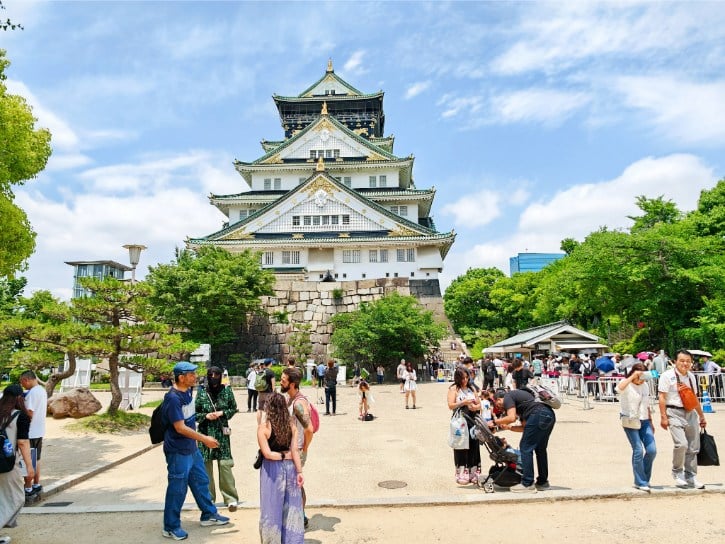
- Allows comfortable exploration of key attractions like Osaka Castle, Universal Studios Japan, and multiple visits to vibrant neighborhoods like Dotonbori and Shinsekai.
- Gives flexibility to explore local dining scenes, nightlife, and shopping districts without rushing.
ii. Kyoto (3 Full Days Minimum)
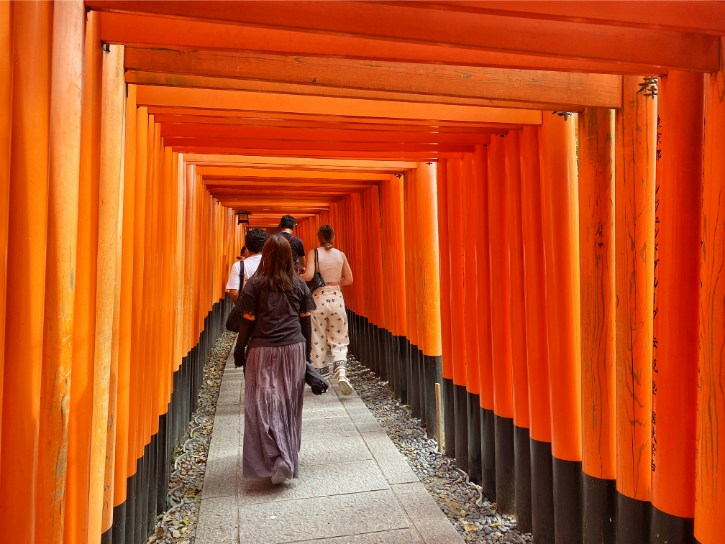
- Lets you properly enjoy iconic temples and shrines, including Kiyomizu-dera, Fushimi Inari Shrine, Kinkaku-ji (Golden Pavilion), and Arashiyama Bamboo Grove.
- Offers enough time for relaxed exploration of traditional areas such as Gion, Nishiki Market, and charming side streets.
- Allows opportunities for evening experiences, such as leisurely dining, night strolls, and cultural activities like tea ceremonies.
10. Not Checking Convenience Store Proximity to Your Hotel
a. Unexpected Inconvenience
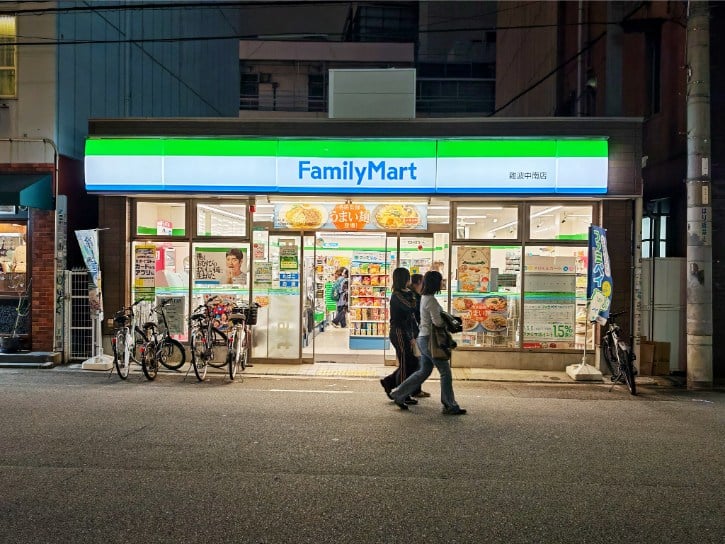
- Basic Essentials: Without a nearby convenience store, you might have trouble quickly buying things like snacks, water, or umbrellas.
- Budget Meals: Convenience stores offer affordable meals like breakfast items, rice balls, sandwiches, and bento boxes. If your hotel isn’t close to one, you’ll spend more at restaurants or hotel services.
b. Limited Late-Night Options
- 24-Hour Access: Convenience stores stay open all night. If there’s none nearby, late-night snacks, quick meals, or emergency items become harder to find.
- Quiet Areas: In quieter neighborhoods, especially in Kyoto or suburban parts of Osaka, late-night dining options can be very limited.
c. ATM and Financial Convenience
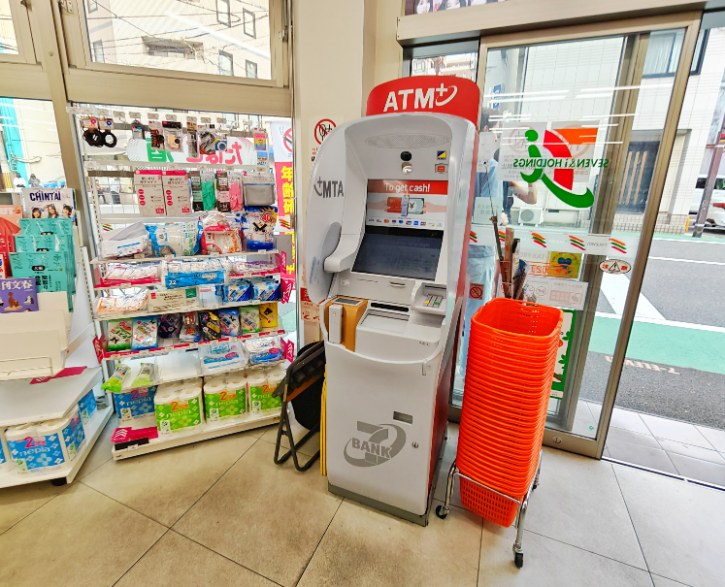
- Easy Cash Withdrawal: Convenience stores usually have ATMs that accept international cards. Without a nearby store, you may have trouble finding convenient ATMs, especially outside regular banking hours.
- Cash-Based Society: Japan relies heavily on cash, so having easy ATM access at stores like 7-Eleven, FamilyMart, or Lawson is important.
d. Recommendations for Popular Chains
- Best Choices: Pick a hotel close to popular chains like 7-Eleven, FamilyMart, or Lawson. These stores are widespread and reliable in both Osaka and Kyoto.
- Map Check: Before booking your hotel, check Google Maps to ensure one of these convenience stores is within easy walking distance.
Related Posts
Photo Credit:
Photos by PIXTA

